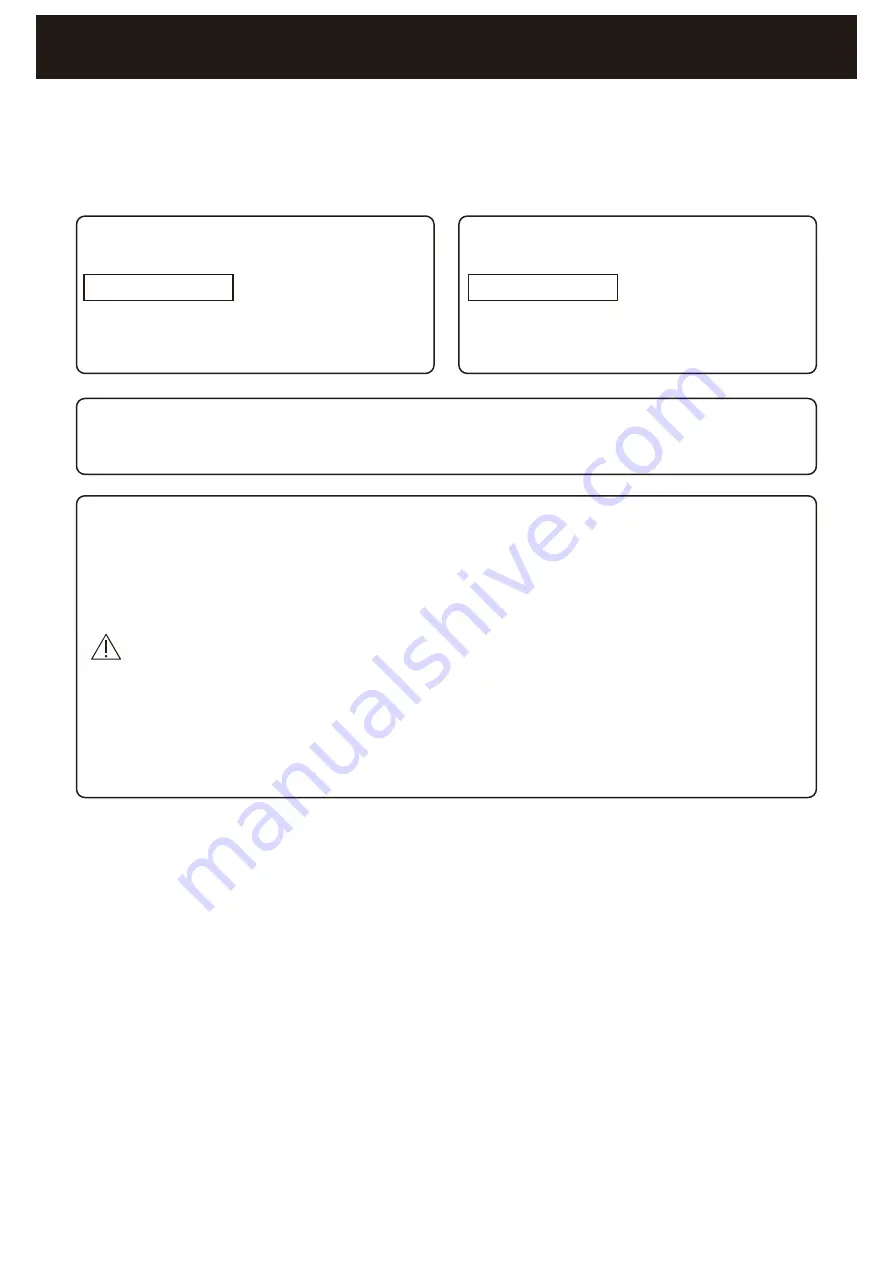
Take care of the product after use and keep it always clean. If dirt is allowed to remain, mold may
be generated.
Maintenance of each section
To use the equipment that has not been used for a long time, clean before using and be sure to
check that the equipment operates safely without any error.
Metal
CAUTIONS
Care and Maintenance
If the dirt is heavy
Wipe the upholstery with soft and dry cloth.
Upholstery
Resin
11
By using a soft cloth dampened with neutral
detergent diluted to about 10% with water,
wipe out dirt. After that, wipe with a dry cloth.
If the dirt is heavy
Wipe the resin with soft and dry cloth.
By using a soft cloth dampened with neutral
detergent diluted to about 10% with water,
wipe out dirt. After that, wipe with a dry cloth.
Wipe the metal with soft and dry cloth.
Do not wipe the metal with wet cloth because the metal hates humidity and water. If the
metal is watered, wipe out moisture immediately. Moisture may cause rusting or malfunction.
Do not use anything other than neutral detergent for cleaning.
· Particularly, never use the following:
Volatile chemicals such as thinner, alcohol, nail polish remover, gasoline, or
kerosene; acidic, alkaline and chlorinated detergent; strong disinfectant that
corrodes metal; povidone-iodine (isodine solution); sodium hypochlorite;
abrasive wax; abrasive sponges, etc. Do not use a brush or scrubbing brush
for cleaning. It may scratch the surface, making it impossible to remove dirt.
· The metal and mechanical parts of the equipment have sharp portions. Be
careful not to hurt your hands or fingers at the time of cleaning.
· Do not clean the upholstery with detergent including organic solvent or abra-
sives or bleach. Doing so may cause deterioration of the surface and change
of texture and gloss.
· In order to avoid infiltration by plasticizer when the color of clothing or a belt
remains in the upholstery, wipe it out by using a soft cloth dampened with neutral
detergent diluted to about 10% with water. After that, wipe with a dry cloth.
Spray-type (especially hard type) hair-setting agent
When spray-type (especially hard-type) hair-setting agent is used, check the entire surface
(including the upholstery) of the equipment for adhesion of hair setting agent. If adhesion is
found, wipe it off promptly. If it is left unremoved, the adhered hair setting agent gets hard,
making the surface rough. In particular, the rough texture becomes more conspicuous and
noticeable on a flat portion such as a resin cover.
Note: Action to be taken when the hair setting agent has become hard
If hair setting agent is stuck and become hard, remove it with ethanol. However, if a substance
that is stuck to the resin cover or upholstery is removed with ethanol many times, the surface is
degraded, resulting in loss of gross or generation of cracks. The best method to prevent it is to
wipe it out promptly when adhesion of hair setting agent is found.






































